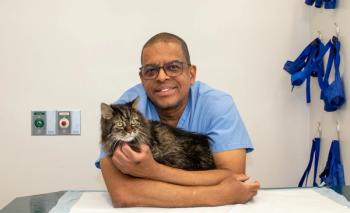
Q&A: Regulating our radiation
Traditional, CR, or DR: Keep those safety garments and OSHA procedures in place.
Q: How can I be sure our team members are being protected from radiation—even from CR and DR?
Digital radiography (DR) and computerized radiography (CR) have revolutionized veterinary hospitals by making it easier to capture, manipulate, copy, and store images. However, some people believe that radiation from DR or CR is not as dangerous as that from regular radiographs and that safety precautions aren't as important. They're wrong.
Don't skip safety garments
The amount of radiation necessary to produce an image is similar for DR, CR, and traditional radiography techniques. While DR and CR receptor plates are more sensitive, which means you can use lower exposure settings to take images, the decreased exposure isn't significant enough that you can forgo normal safety requirements.
Furthermore, while you can manipulate CR and DR images after exposure—which means you don't need as many takes—this doesn't make the radiation safe. Radiation during a first exposure is still a hazard, and protective equipment and sound techniques are still necessary.
OSHA and some states require you to use protective aprons and gloves when restraining an animal for a radiograph. Thyroid shields aren't normally required, but they're highly recommended.
Get your hands out of their mouths
Misinformation has also led to poor safety practices in dental radiography. When taking dental radiographs, you need to wear protective apparel if you're not behind a protective shield. That goes for CR, DR, and traditional systems. Rules from OSHA prohibit holding the intraoral film or receptor plate with your hand, even if you're wearing gloves.
You can make an inexpensive, effective film or receptor plate holder for dental operations from a slim, flat rod, such as a paint stirring stick. This lets you put pressure against the film or receptor plate but keep your gloved finger out of the patient's mouth and away from the primary radiation beam.
Forewarned is forearmed. DR and CR are safer than traditional radiography in some respects, but you can't neglect proper safety procedures. An X-ray is an X-ray, no matter where it comes from.
Phil Seibert, CVT, is an author, speaker, and consultant with SafetyVet in Calhoun, Tenn.
Newsletter
From exam room tips to practice management insights, get trusted veterinary news delivered straight to your inbox—subscribe to dvm360.






